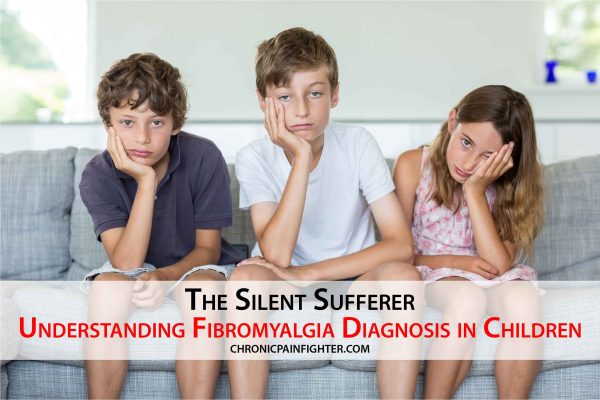Fibromyalgia is a complex chronic condition characterized by widespread pain, fatigue, cognitive dysfunction, and a variety of other symptoms that can significantly impact an individual’s quality of life. One common aspect of fibromyalgia that many individuals experience is the phenomenon of fibromyalgia flares. These flares, characterized by a sudden exacerbation of symptoms, can be unpredictable and challenging to manage. In this article, we will delve into the concept of fibromyalgia flares, exploring their causes, symptoms, triggers, and strategies for coping with and managing flares effectively.
What are Fibromyalgia Flares?
Fibromyalgia flares, also known as flare-ups, are episodes of increased symptom severity that can occur spontaneously or in response to various triggers. During a flare, individuals with fibromyalgia may experience heightened pain, fatigue, cognitive fog, sleep disturbances, mood changes, and other symptoms that can impair daily functioning and quality of life. Flares can vary in intensity and duration, ranging from mild to severe and lasting from a few hours to several days or weeks.
Causes and Triggers of Fibromyalgia Flares
While the exact cause of fibromyalgia flares is not fully understood, several factors have been identified as potential triggers for exacerbating symptoms. Common triggers of fibromyalgia flares include:
- Stress: Psychological stress, such as work pressure, relationship issues, financial worries, or traumatic events, can trigger flares in individuals with fibromyalgia. Stress activates the body’s stress response system, leading to increased muscle tension, pain perception, and inflammation, all of which can worsen fibromyalgia symptoms.
- Overexertion: Physical overexertion, such as lifting heavy objects, engaging in vigorous exercise, or prolonged periods of standing or sitting, can strain the muscles and joints, leading to increased pain and fatigue during a flare-up.
- Weather Changes: Changes in weather conditions, such as fluctuations in temperature, humidity, barometric pressure, or seasonal shifts, can impact pain sensitivity and trigger flares in individuals with fibromyalgia.
- Sleep Disturbances: Poor sleep quality, insomnia, or disruptions in the sleep-wake cycle can exacerbate fibromyalgia symptoms and increase the likelihood of experiencing flares.
- Hormonal Changes: Hormonal fluctuations, such as those related to menstruation, pregnancy, menopause, or thyroid imbalances, can influence pain perception and symptom severity in individuals with fibromyalgia.
Symptoms of Fibromyalgia Flares
During a fibromyalgia flare, individuals may experience a range of symptoms, including:
- Pain: Increased musculoskeletal pain, is often described as deep, widespread, and debilitating.
- Fatigue: Severe fatigue and exhaustion, lead to decreased energy levels and functional impairment.
- Cognitive Issues: Cognitive dysfunction, such as memory problems, difficulty concentrating, and mental fog.
- Sleep: Sleep disturbances, including insomnia, restless sleep, or non-restorative sleep.
- Mood: Mood changes, such as irritability, anxiety, depression, or heightened emotional reactivity.
Coping Strategies for Managing Fibromyalgia Flares
Effectively managing fibromyalgia flares requires a combination of self-care strategies, lifestyle modifications, and treatment interventions. Here are some tips for coping with and managing fibromyalgia flares:
- Develop a Flare Management Plan: Work with your healthcare provider to develop a personalized flare management plan that includes strategies for symptom relief, lifestyle modifications, and emergency protocols for severe flares.
- Prioritize Self-Care: Practice self-care activities that promote relaxation, stress reduction, and symptom management, such as mindfulness meditation, deep breathing exercises, gentle yoga, or warm baths.
- Pace Yourself: Avoid overexertion and pace yourself in daily activities to prevent triggering flares. Use pacing techniques, such as breaking tasks into smaller intervals, taking frequent breaks, and balancing rest and activity.
- Maintain a Healthy Lifestyle: Adopt a healthy lifestyle that includes a balanced diet, regular exercise, adequate sleep, and stress management techniques to support overall well-being and reduce the impact of flares.
- Seek Support: Build a support network of friends, family members, healthcare providers, and support groups who can offer emotional support, practical assistance, and compassionate understanding during flare-ups.
Conclusion
In conclusion, fibromyalgia flares are a common and challenging aspect of the condition that can significantly impact the quality of life and daily functioning of individuals with fibromyalgia. By understanding the causes, symptoms, triggers, and coping strategies for fibromyalgia flares, individuals can better manage and navigate these episodes effectively. It is crucial to work closely with healthcare providers, develop a personalized flare management plan, prioritize self-care and lifestyle modifications, and seek support from a supportive network to cope with and overcome fibromyalgia flares. With the right strategies and resources in place, individuals with fibromyalgia can minimize the impact of flares, enhance their quality of life, and continue to thrive despite the challenges posed by the condition.






